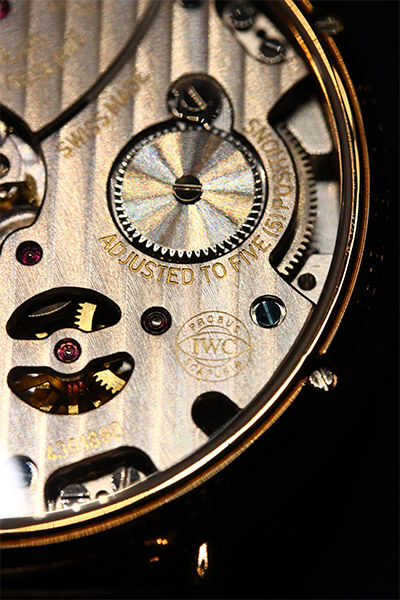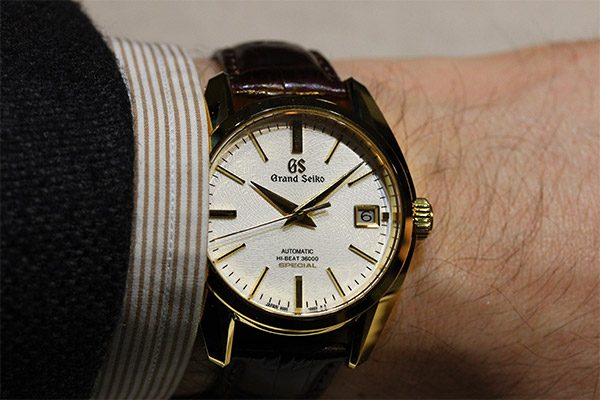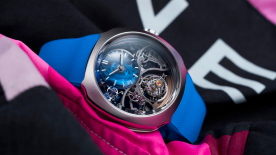36 or 38? 40, 42, or even 46 mm? When a new watch model is launched, one essential question is: what should its diameter be? The answer is simple. It depends! There are many different factors that come into play. One of the most important is current trends – and they tend to run in three or four-year cycles. So, what are these factors, where are modern trends heading, and how do these elements influence contemporary watch design?

The first factor is the movement and its complications, and the restrictions they impose in terms of case size. With a smaller case size, it’s far easier to accommodate a manual three-hander with date, than a wandering hour flyback chronograph. Design studios and end clients still have to comply with the dictates of mechanical engineering. In the early 2000s, movements were based on old designs, and they tended to be small. But fashion was demanding bigger and bigger cases. The result was chronograph counters huddled together in the centre of outsized dials, and perpetual calendar displays all but lost on the wrist. Today, there’s a big enough catalogue of available calibres, whether they come from generic suppliers, high-end movement makers, or directly from watch brands with in-house capabilities, to provide a genuine choice. The race to develop ultra-thin movements has opened up the possibilities even further.

And then there’s the brand itself. Is it exuberant, like Hublot, or conservative, like Patek Philippe? Does it have something to prove? Is it looking for a discreet harmony between watch and wrist or, conversely, is being oversized part of its appeal, as it is for Rebellion? Are complications a major feature? In which case, the multiple displays have to remain legible for their users, some of whom will have failing eyesight, which means using bigger typefaces. Do the company’s modest resources mean it has to rely on a catalogue of smaller, affordable, generic components?

Another factor is the watch’s intended effect. Is it meant to be noticed from a distance? Should it be imposing, helping to give an imposing impression of its owner? The spirit of a model is intimately connected to the image it projects, which in turn is dictated by the register of the watch. It’s more logical to be generous with space allocation for a sports watch, where legibility plays an important role, as opposed to an elegant dress watch. It’s entirely natural that a dive watch designed to cope with serious depths should be big, because that helps it to withstand water pressure, and the bezel has to be easy to manipulate with gloved hands.

But the current fashion is tending towards smaller sizes. Where, five years back, 44 mm diameters dominated, now 42 mm has become standard. 40 mm is gaining favour, when for a time it was relegated to women’s wear or highly conservative models. But 38 mm for men is no longer an aberration, and women are also choosing diameters smaller than 44 mm. Some brands have abandoned their more macho lines; Hublot, for instance, has dropped the King Power, which starts at 46 mm. But other brands continue to serve these markets; oversized watches remain popular in Russia and the United States, where taller clients make XXL watches more useful. Miniature women’s watches, coming in under the 28 mm bar, have flourished at Hermès, Baume & Mercier and Chaumet and have proved popular in Europe and Japan, but nowhere else.
The final factor is the trickiest to judge, because it involves more than just the isolated, somewhat arbitrary measurement of case diameter. There’s no standard way of measuring how bulky a watch looks on the wrist. The snugness of the fit is determined by a combination of the total diameter of the case, the dial opening, the watch’s thickness, the width of the bezel and the radius of the lugs’ curvature, a particularly subtle measurement. Thus, an ultra-thin Piaget with a 43 mm diameter and a flat profile will look more awkward on a small wrist than a Richard Mille measuring 50 x 16 mm, which looks bigger on paper, but which features a curved back.

Given the plethora of options and variables, watchmakers are increasingly choosing to take a shortcut. New watches are designed to have maximum appeal by being launched in two, sometimes three or even four different diameters. One or two of them are intended for women, the third is moderately sized and unisex, measuring between 38 and 41 mm, and the final one is over 42 mm. Thus the watchmaker can reach a range of audiences with a single product, and reduce risk.











